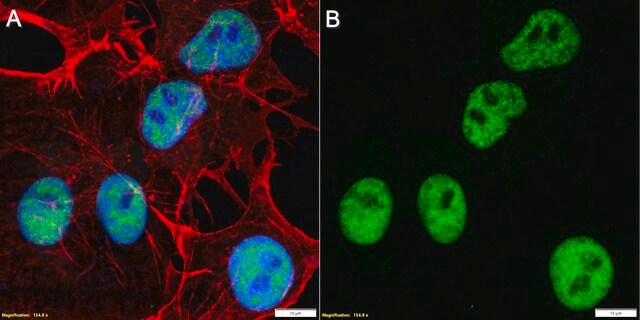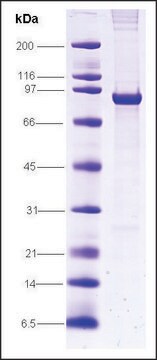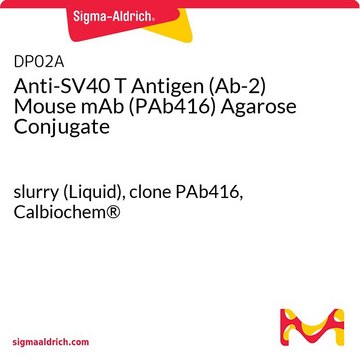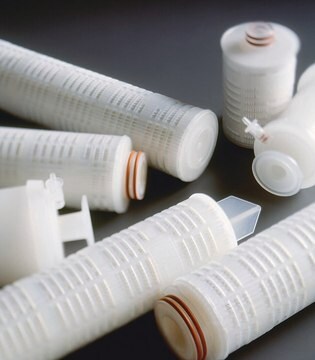DP02
Anti-SV40 T Antigen (Ab-2) Mouse mAb (PAb416)
liquid, clone PAb416, Calbiochem®
About This Item
Prodotti consigliati
Origine biologica
mouse
Livello qualitativo
Forma dell’anticorpo
purified antibody
Tipo di anticorpo
primary antibodies
Clone
PAb416, monoclonal
Forma fisica
liquid
contiene
≤0.1% sodium azide as preservative
Reattività contro le specie
SV40-infected cells
Produttore/marchio commerciale
Calbiochem®
Condizioni di stoccaggio
do not freeze
Isotipo
IgG2a
Condizioni di spedizione
wet ice
Temperatura di conservazione
2-8°C
modifica post-traduzionali bersaglio
unmodified
Descrizione generale
Immunogeno
Applicazioni
Immunoblotting (1-5 µg/ml, see application references)
Immunofluorescence (1-5 µg/ml)
Immunoprecipitation (1-5 µg antibody, use Cat. No. DP02A)
Paraffin Sections (see application references)
Confezionamento
Attenzione
Stato fisico
Risultati analitici
3T3 cells
SV80 or SV-T2 cells
Altre note
Whyte, P., et al. 1988. Nature334, 124.
Mitchell, P.J., et al. 1987. Cell50, 847.
Dixon, R.A.F. and Nathans, D., 1985. J. Virol.53, 1001.
Simanis, V. and Lane, D.P. 1985. Virol.144, 88.
Mann, R.S. and Carroll, R.B. 1984. Virology138, 379.
Sarnow, P., et al. 1982. Cell28, 387.
Crawford, L.V., et al. 1981. Proc. Natl. Acad. Sci. USA78, 41.
Lane, D.P. and Crawford, L.V. 1979. Nature278, 261.
Carroll, R.B., et al. 1974. Proc. Natl. Acad. Sci. USA71, 3754.
Tooze, J. 1973. Cold Spring Harbor, New York.
Tegtmeyer, P. 1972. J. Virol.10, 591.
Note legali
Non trovi il prodotto giusto?
Prova il nostro Motore di ricerca dei prodotti.
Codice della classe di stoccaggio
12 - Non Combustible Liquids
Classe di pericolosità dell'acqua (WGK)
WGK 2
Punto d’infiammabilità (°F)
Not applicable
Punto d’infiammabilità (°C)
Not applicable
Certificati d'analisi (COA)
Cerca il Certificati d'analisi (COA) digitando il numero di lotto/batch corrispondente. I numeri di lotto o di batch sono stampati sull'etichetta dei prodotti dopo la parola ‘Lotto’ o ‘Batch’.
Possiedi già questo prodotto?
I documenti relativi ai prodotti acquistati recentemente sono disponibili nell’Archivio dei documenti.
Il team dei nostri ricercatori vanta grande esperienza in tutte le aree della ricerca quali Life Science, scienza dei materiali, sintesi chimica, cromatografia, discipline analitiche, ecc..
Contatta l'Assistenza Tecnica.








